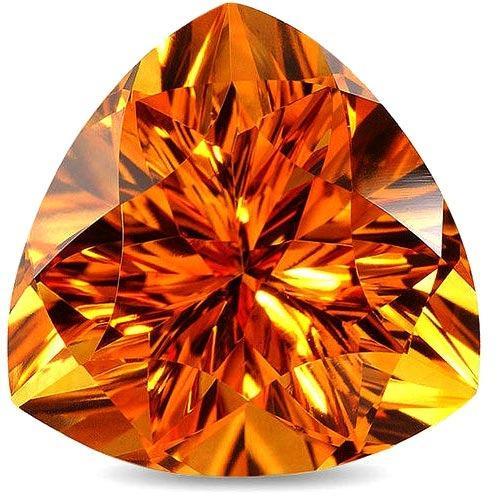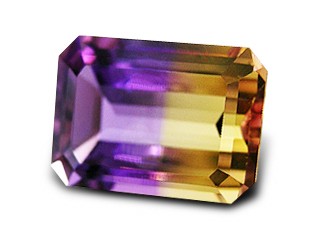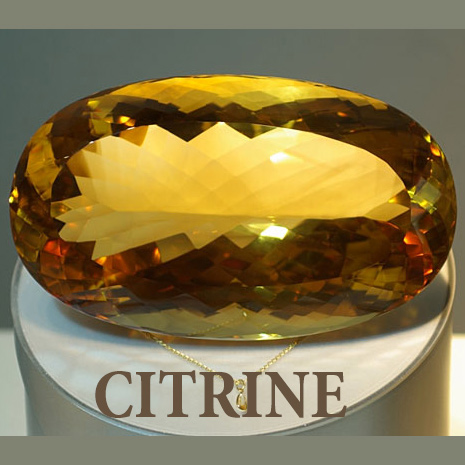 Citrine is a variety of the quartz family and is found in various shades of yellow and orange with red tones. Gems of the quartz family with very pale yellow color are commonly called lemon quartz and are not classified in the citrine variety. Citrine belongs to the same family as amethyst but is much rarer than the popular purple gemstone. Its name comes from the Latin word citrine which means yellow.
Citrine is a variety of the quartz family and is found in various shades of yellow and orange with red tones. Gems of the quartz family with very pale yellow color are commonly called lemon quartz and are not classified in the citrine variety. Citrine belongs to the same family as amethyst but is much rarer than the popular purple gemstone. Its name comes from the Latin word citrine which means yellow.
The yellow color of citrine is due to the presence of iron hydroxide elements in the composition of quartz.
Citrine looks very much like the yellow topaz and it is difficult to distinguish one from the other with the naked eye without the proper specialization. The main difference between the two minerals is their hardness since citrine is ranked at 7 on the Mohs scale and the topaz at 8. The fact that citrine has medium to high hardness has enabled artists to create works of art based on citrine and jewelers to cut the mineral in fanciful designs for fashionable jewellery.
Citrine is often mined in large gems and the use of 20ct citrines or even bigger in jewelry making is common. Large uncut Brazilian citrines ranging from 217 to 2,258 carats are exhibited in the Museum of Natural History of the Smithsonian Institute. The most important citrine producing country at present is Brazil, while citrine deposits exist also in Spain, France, Uruguay, and Madagascar.
Ametrine
 Ametrine is a rare variety of quartz, which is essentially a mix of amethyst and citrine since it presents both colors simultaneously (purple and yellow). Iron elements at different stages of oxidation in the composition of the quartz are responsible for the gem's dual color. Ametrine mines exist only in Bolivia.
Ametrine is a rare variety of quartz, which is essentially a mix of amethyst and citrine since it presents both colors simultaneously (purple and yellow). Iron elements at different stages of oxidation in the composition of the quartz are responsible for the gem's dual color. Ametrine mines exist only in Bolivia.
The Malaga
 It's the largest citrine that has been cut to date. It has an oval cut, weighs 20.200 carats (over 39 kilos) and its dimensions are 20x15x10 cm.
It's the largest citrine that has been cut to date. It has an oval cut, weighs 20.200 carats (over 39 kilos) and its dimensions are 20x15x10 cm.
It was discovered in Brazil in 1990, and due to the difficulty of cutting it, it remained uncut by 2009. It is now exposed to the Malaga Natural History Museum, where it has been named.